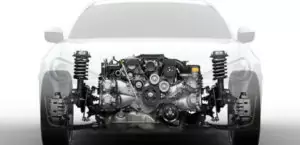The 2.0-liter gasoline engine Volkswagen 2.0 AGG 8v was produced from 1995 to 1999 and was installed on the most popular models of the concern, such as the third Golf and Passat B4. Another such power unit is often found under the hood of cars manufactured under the Seat brand.
The EA827 2.0l series includes: 2E, AAD, AAE, ABT, ABK, ADY, AGG, ABF, ACE.
Specifications
| Production years | 1995-1999 |
| Displacement, cc | 1984 |
| Fuel system | injector |
| Power output, hp | 115 |
| Torque output, Nm | 166 |
| Cylinder block | cast iron R4 |
| Block head | aluminum 8v |
| Cylinder bore, mm | 82.5 |
| Piston stroke, mm | 92.8 |
| Compression ratio | 9.6 |
| Features | SOHC |
| Hydraulic lifters | yes |
| Timing drive | belt |
| Phase regulator | no |
| Turbocharging | no |
| Recommended engine oil | 5W-30 |
| Engine oil capacity, liter | 3.8 |
| Fuel type | petrol |
| Euro standards | EURO 2/3 |
| Fuel consumption, L/100 km (for VW Passat 1995) — city — highway — combined |
11.9 6.8 8.7 |
| Engine lifespan, km | ~430 000 |
The engine was installed on:
- Volkswagen Golf 3 (1H) in 1995 – 1999;
- Volkswagen Passat B4 (3A) in 1995 – 1996;
- Volkswagen Vento 1 (1H) in 1995 – 1998;
- Seat Cordoba 1 (6K) in 1996 – 1999;
- Seat Ibiza 2 (6K) in 1996 – 1999;
- Seat Toledo 1 (1L) in 1996 – 1999.
Disadvantages of the VW AGG engine
- A worthy heir to the 2E motor is also reliable and rarely worries its owners;
- Most engine problems are caused by malfunctioning ignition system components;
- The remaining breakdowns are usually related to the electrician, the crankshaft position sensor, the coolant temperature sensor and the idle speed controller are buggy here;
- The timing belt serves about 90,000 km, but when it breaks, the valves almost never bend;
- Closer to 250,000 km of run, rings often already lie down and oil consumption appears.






